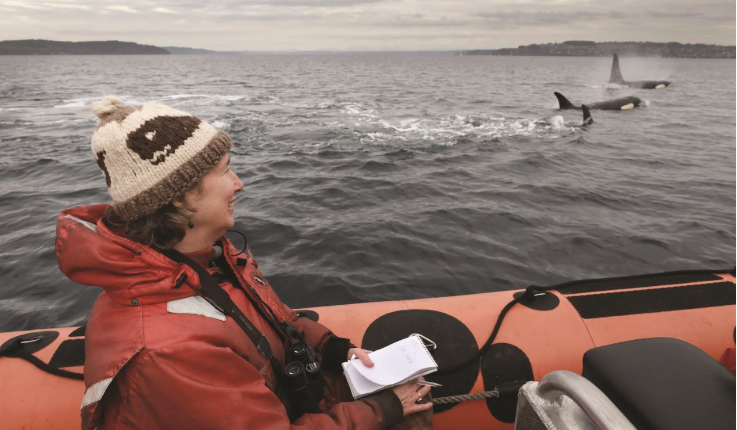
The following is excerpted from Orca: Shared Waters, Shared Home by Lynda Mapes, a new book from Mountaineers Books conservation imprint Braided River. Through interviews with scientists and Northwest Native tribal members, Mapes lays out the human causes behind the orcas' precarious situation, revealing that the health of the southern residents is deeply entwined not only with Chinook salmon, but with the entire natural world of the Pacific Northwest.
A powerful story, Orca offers a window into these creatures’ lives - their remarkable intelligence, rich culture, lifelong family ties, and elaborate communication skills - as well as hope for their future. Read on as Mapes shares a joyful memory of a special day with the southern resident orcas, and highlights one of the problems they face.
Downtown Orcas
The southern resident orcas still seek the fish returning to Puget Sound rivers, surging even all the way into the urban waters offshore of downtown Seattle, hunting chum, coho, and chinook. The special time for Seattle-area residents is when the southern residents, in their final seasonal rounds of the year, come here at last. Downtown orcas. Who else has that?
Sometimes the southern residents are here for days on end, thrilling ferry riders crisscrossing central Puget Sound and people flocking to beaches all over West Seattle and Vashon and Maury Islands to watch orcas blow and breach, right offshore. One day in November 2018, J, K, and L pods were all here at once. Dozens of orcas were cartwheeling and spy-hopping, right past the Superfund site of the Asarco Smelter at Ruston near Tacoma, right past the dense-packed housing along the long-ago logged-off hillsides. They sculled underwater upside down, their bellies glowing white through the green water, and slapped their pectoral fins and flukes seemingly just for fun or maybe simply to hear the loud, resonant, smacking sound.
As the sunset painted the water gold, people thronged the beaches and shorelines, enchanted all over again at what it means to live here, in a place still alive with salmon and orcas on the hunt.
The southern resident orcas that roam the region’s urban waters are like black-and-white-robed judges of a truth-and reconciliation commission. They remind us all of what is still here and what is at risk—what we took for ourselves, what we took from them. Their hunger is an indictment, because we caused it. Their hunger points to what’s missing. At stake as the region gets richer is whether it also will get poorer, with only the grandmother orcas remembering the salmon that used to be.
To better understand what the southern resident orcas need, I traveled north, to lands and waters where orcas are still thriving. The land of the northern residents is a place that looks a lot more like Puget Sound used to. The orcas living there are the same animal as their urban counterpart, the southern residents. The only difference between the northern resident orcas that are thriving and the southern resident orcas headed to extinction is… the millions of us who live in their home territory. They were here first. They belong here. But now, they contend for survival amid all of us.
Orca is available for purchase at our Seattle Program Center bookstore, online at mountaineersbooks.org, and everywhere books are sold. Learn more and find information on upcoming events at http://www.orca-story.com.
This article originally appeared in our Summer 2021 issue of Mountaineer Magazine. To view the original article in magazine form and read more stories from our publication, visit our magazine archive.
 Lynda Mapes
Lynda Mapes